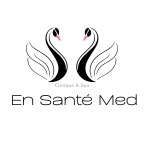WHAT YOU NEED TO KNOW ABOUT HAIR RESTORATION
How Hard Is It to Manage Hair Loss?
Managing hair loss is a complex and multifaceted challenge. The best way to address the issue is by using different treatments and making lifestyle changes to get the best results. Hair loss can result from multiple factors, including genetics, hormonal changes, nutritional deficiencies, stress, and certain medical conditions. Because of these diverse causes, a single treatment is rarely sufficient.
Oral supplements such as Viviscal and Nutrafol are commonly recommended as part of a hair loss treatment regimen. These supplements contain ingredients that support hair growth, including vitamins, minerals, and botanical extracts.
However, it’s important to have realistic expectations regarding these treatments. Typically, you can expect to see results from such supplements after approximately six months of consistent use. This extended timeline can be challenging for individuals seeking immediate improvements, underscoring the importance of patience and persistence in hair loss management.
Early intervention is crucial when dealing with hair loss. The earlier you address the issue, the more effective the treatment is likely to be. Hair follicles that have been dormant for an extended period are more challenging to revive, and it takes time to repair the damage caused by hair loss.
At En Santé Clinic and Medical Spa, we use new technology and treatments to reduce hair loss in 3-6 sessions. We design our approach to offer effective solutions tailored to individual needs, combining cutting-edge treatments with personalized care.
Our Multi-Prong Approach
- Keravive
- Fotona Hair Restart
- Platelet-Rich Plasma and Fibrin
- Proprietary Hair Stimulation Infusions
The Keravive Process
Keravive is a specialized scalp treatment designed to rejuvenate the scalp and promote healthier hair growth. The treatment involves several steps, each targeting different aspects of scalp health:
- Exfoliation: The treatment begins with a gentle exfoliation of the scalp to remove dead skin cells, excess oils, and product buildup. These elements can clog hair follicles and hinder healthy hair growth. Exfoliation helps to create a clean slate, ensuring that subsequent treatments can penetrate more effectively. Specialized exfoliating products or tools are used to perform this step, tailored to individual scalp conditions.
- Cleansing: After exfoliation, a specialized cleansing solution is applied to the scalp to thoroughly purify it. This step removes impurities, dirt, and debris from the scalp, creating a clean and healthy environment for hair follicles. A clean scalp is essential for preventing infections and ensuring that hair follicles remain unclogged.
- Serum Application: A nourishing serum enriched with vitamins, antioxidants, and other beneficial ingredients is then applied to the scalp. This serum helps to hydrate, soothe, and revitalize the scalp, promoting optimal conditions for hair growth. The ingredients in the serum are carefully selected to provide essential nutrients that support healthy hair growth and improve scalp health.
- Massage: A relaxing scalp massage is included as part of the treatment. This massage helps to improve blood circulation to the scalp, enhancing the delivery of nutrients to the hair follicles and encouraging healthy hair growth. Improved blood flow ensures that hair follicles receive the oxygen and nutrients they need to thrive.
- Hydration: The treatment may also involve applying a hydrating mask or treatment to further replenish moisture to the scalp and hair. Hydration is essential for maintaining a healthy scalp environment and supporting hair growth. A well-hydrated scalp is less prone to dryness and flakiness, which can contribute to hair loss.
Hair Restart® – Low-Level Laser Therapy
Low-level laser therapy (LLLT), also known as laser hair therapy or red light therapy, is a non-invasive treatment that uses low-power laser or light to stimulate hair follicles and promote hair growth. This therapy has gained popularity due to its effectiveness and minimal side effects. Here’s how it works:
- Improved Blood Flow: The light energy from the laser stimulates blood circulation in the scalp. This increased blood flow ensures better nutrient and oxygen delivery to hair follicles, promoting healthier hair growth. Enhanced circulation also helps to remove waste products from the scalp more efficiently.
- Increased Cellular Activity: The light energy enhances cellular metabolism and activity within hair follicles, promoting healthier hair growth. This stimulation encourages hair follicles to remain in the anagen phase (the active growth phase) for longer periods, resulting in thicker and longer hair strands.
- Reduced Inflammation: LLLT helps decrease inflammation in the scalp, which can contribute to hair loss. Inflammation can damage hair follicles and disrupt the hair growth cycle. By reducing inflammation, LLLT creates a more favorable environment for hair growth.
- Extended Anagen Phase: The anagen phase is the active growth phase of the hair cycle. LLLT is believed to extend this phase, leading to longer and thicker hair strands. Prolonging the anagen phase ensures that more hair follicles are actively producing hair, resulting in increased hair density.
- Enhanced Energy Production: Light energy stimulates the production of adenosine triphosphate (ATP), essential for cellular function and hair growth. ATP serves as the primary energy source for cellular processes, and increased ATP production supports the metabolic activities required for hair growth.
Bioregeneration with Growth Factors
Platelet-Rich Plasma (PRP) therapy for hair loss is a non-surgical procedure that stimulates hair growth using the healing properties of your own blood platelets. PRP therapy harnesses the body’s natural healing processes to promote hair growth and improve hair density. Here’s how the procedure typically works:
- Preparation: A small amount of your blood is drawn, usually from your arm, similar to a routine blood test. The amount of blood drawn depends on the treatment area and the desired concentration of platelets.
- Centrifugation: The drawn blood is placed in a centrifuge machine, which spins at high speed to separate the blood components. This process isolates the platelet-rich plasma from the other blood components. Platelets contain growth factors that are crucial for tissue repair and regeneration.
- Isolation of PRP: After centrifugation, the platelet-rich plasma is carefully extracted, leaving behind the platelet-poor plasma and red blood cells. The PRP is then prepared for application to the scalp.
- Preparation of Scalp: Before applying the PRP, the scalp is cleansed and sometimes numbed with a local anesthetic to minimize discomfort. A clean and numb scalp ensures a more comfortable and effective treatment experience.
- Injection or Topical Application: There are two main methods for applying PRP to the scalp:
- Injections: The PRP is injected directly into areas of the scalp where hair thinning or loss is most prominent. The injections are performed with a fine needle and are spaced out across the targeted area. This method ensures that the growth factors are delivered directly to the hair follicles.
- Topical Application: Alternatively, the PRP can be applied topically to the scalp after microneedling. Microneedling creates tiny channels in the scalp, allowing for better absorption of the PRP. This method is less invasive and can be combined with other topical treatments.
PRP therapy is particularly effective because it uses the body’s natural healing processes to stimulate hair growth. The growth factors in PRP promote cell regeneration, improve blood flow to the scalp, and enhance the health of hair follicles.
At En Santé Clinic and Medical Spa, we offer advanced treatments and personalized care for hair restoration. Our goal is to help with hair loss and improve scalp health.

